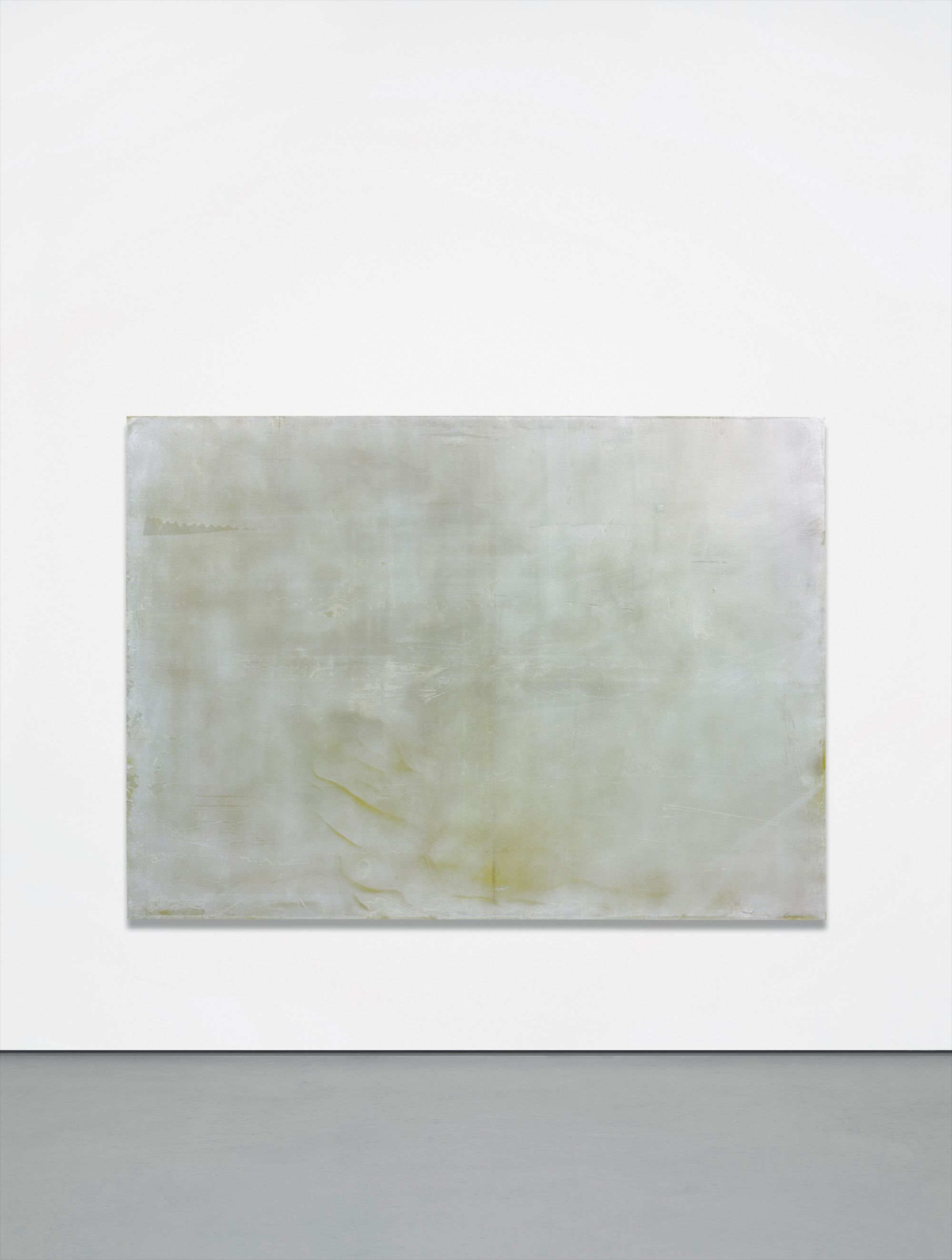

26Ο◆
Rudolf Stingel
Untitled
Full-Cataloguing
First recognized in the late 1980s for his monochromatic works, Rudolf Stingel has developed a singular approach to painting that aims to examine and reinvigorate the very essence of two-dimensional visual expression in a post-modern environ. Characterized by simultaneous attention to surface, image, color and space, his paintings create new paradigms for the meaning of painting that reflect upon the fundamental questions concerning the practice today: authenticity, meaning, hierarchy and context. Works such as this superb early Untitled, 1989, clearly elucidate Stingel’s profound conceptual and technical ability. His Untitled is a shimmering veil of silver intercut with burning yellow, enveloping the entirety of the canvas in a complex push-pull between the rich lusciousness of the yellows blooming below the luminescent silver surface. Executed in 1989, the same year the artist published his step-by-step manual for creating such paintings, Instruzioni (Instructions), this early work is a fantastic example of the distinctive abstract paintings produced by Stingel beginning around this time and continuing through the 1990s.
Stingel has been able to successfully incorporate a highly conceptual component to his process-based practice and use of materials. His preoccupation with what painting is, its limitations, and what it can achieve has taken him to challenge every assumption and theory about the medium. Simultaneously, Stingel’s paintings, like those of many of his contemporaries, find precedent in the art historical traditions of painting, seeking to push the development of the medium to ever greater heights. The German artist Gerhard Richter, for example, blurs photo-realist paintings to overcome the natural limitations of figurative painting, resulting in the integration of both abstraction and figuration into one work. Stingel’s paintings, however, fall between abstraction and figuration, even between time and space, becoming decoration, painting, architecture all at once, indeed transcending the traditional genre. As Francesco Bonami notes, “While painting is an action, it must also be an observation. The mere act of painting does not create a painting but simply some painting. But if the action of painting is used as a lens to observe reality to create another reality, then we have a Painting... Stingel creates a transitive way to recede from abstraction into the subject and to push the subject into a different kind of time.” (Francesco Bonami “Paintings of Paintings for Paintings – The Kairology and Kronology of Rudolf Stingel” in Rudolf Stingel, exh. cat., Museum of Contemporary Art, Chicago, 2007, pp. 13-14)
Rudolf Stingel
Italian | 1956Rudolf Stingel came to prominence in the late 1980s for his insistence on the conceptual act of painting in a context in which it had been famously declared dead. Despite the prevailing minimalist and conceptual narrative of the time, the Italian-born artist sought to confront the fundamental aspirations and failures of Modernist painting through the very medium of painting itself. While his works do not always conform to the traditional definitions of painting, their attention to surface, space, color and image provide new and expanded ways of thinking about the process and "idea" of painting. Central to his multifarious and prolific oeuvre is an examination of the passage of time and the probing of the fundamental questions of authenticity, meaning, hierarchy, authorship and context by dislocating painting both internally and in time and space. Stingel is best known for his wall-to-wall installations, constructed of fabric or malleable Celotex sheets, as well as his seemingly more traditional oil-on-canvas paintings.